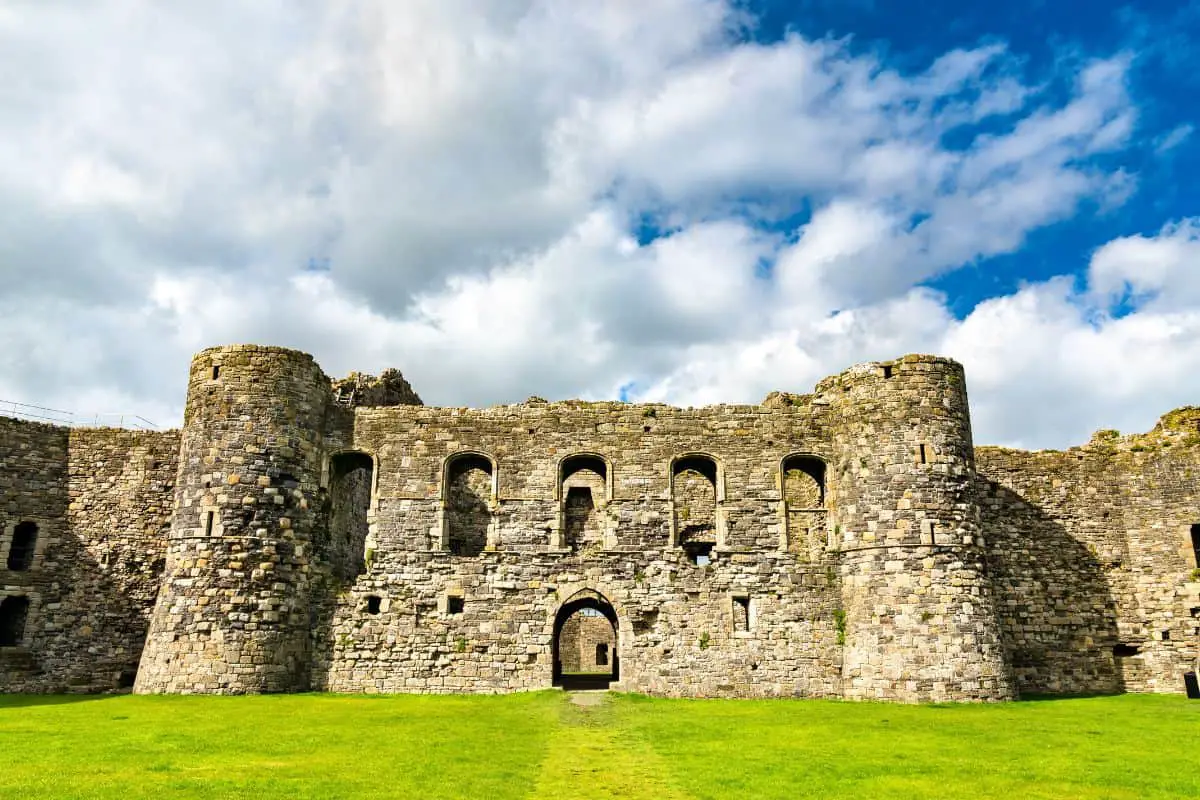Beaumaris Castle is undoubtedly one of the most famous historical attractions on the Isle of Anglesey. Forming part of Edward I’s impressive “Iron Ring”, Beaumaris Castle was set to be the largest and most technically advanced castle in Wales.
While things didn’t quite pan out that way, the structure left behind is still an imposing and breathtaking sight. If you’re planning a visit or just want to learn more about this incredible Anglesey castle, check out these interesting facts.
#1: Construction On Beaumaris Castle Was Never Completed
Beaumaris Castle is often referred to as the “Greatest Castle Never Built.” Construction on the castle began in 1295 but was never completed. Edward I’s battles with the Scottish diverted attention and funds away from the project, and when work on Beaumaris Castle ceased in 1330, the castle was only about two-thirds finished.
#2: It’s Regarded as One of the Best Examples of Concentric Medieval Castle Design in the World
The castle is still an impressive and well-preserved example of medieval architecture despite its unfinished state. In fact, it’s widely considered to be perhaps the best example of a medieval concentric castle design in the world.
The castle comprises symmetrical inner and outer walls, impressive towers, gatehouses, and a moat. UNESCO has even described the castle as one of the “finest examples of late 13th-century and early 14th-century military architecture in Europe.”
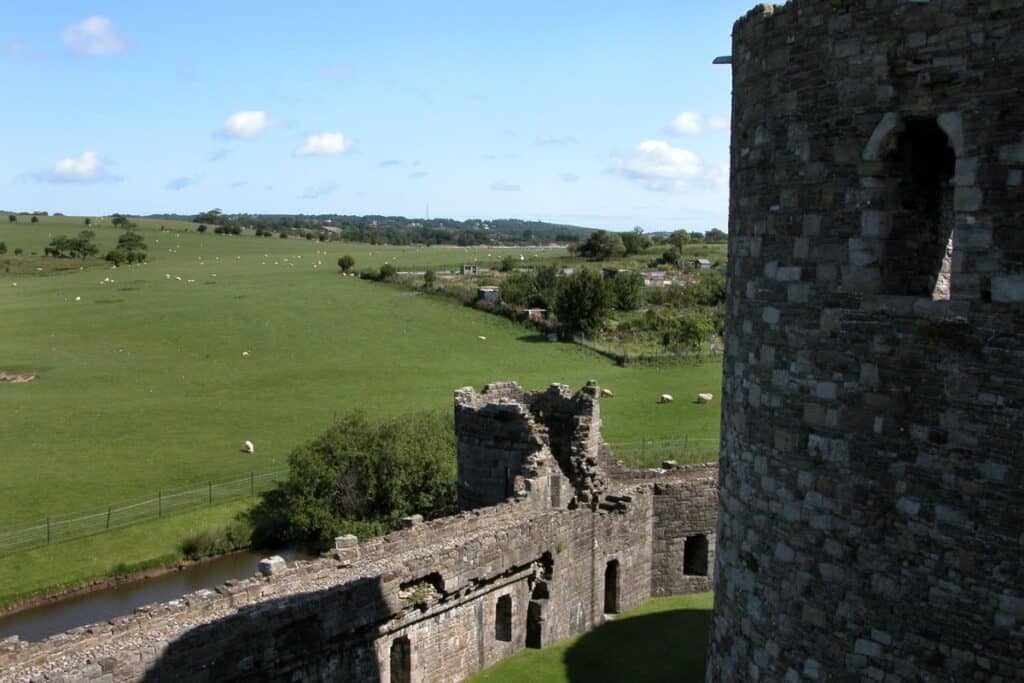
#3: One of the Most Expensive Castles in Welsh History
Beaumaris Castle also boasts another impressive title – it’s thought to be one of the most expensive castles ever built in British history relative to its time, with only Caernarfon Castle costing more to complete (there was an extra 12 years between the start of construction on Beaumaris and Caernarfon).
By 1330, when construction finally ceased, the construction cost was already estimated at £15,000, even though the castle was only two-thirds to three-quarters complete. The income for the English Treasury was less than £20,000 at the time, so the cost of building Beaumaris Castle represented a substantial financial burden. By comparison, Harlech Castle came in at a relatively affordable £8,000.
In today’s money, the cost of construction would be £12.5 million!
#4: Beaumaris Castle Was a Serviceable Defensive Structure Within the Space of a Year
Even though Edward I never got to see his grandiose plans for Beaumaris Castle come to fruition, the castle still made excellent progress, particularly in its early stages. Within just 12 months, there was already a defensive structure in place that could be used in the event of an attack.
Unfortunately, with attention divided between the Welsh and Scottish conflicts, the construction of Beaumaris Castle continued to slow, until it came to a complete halt in 1330.
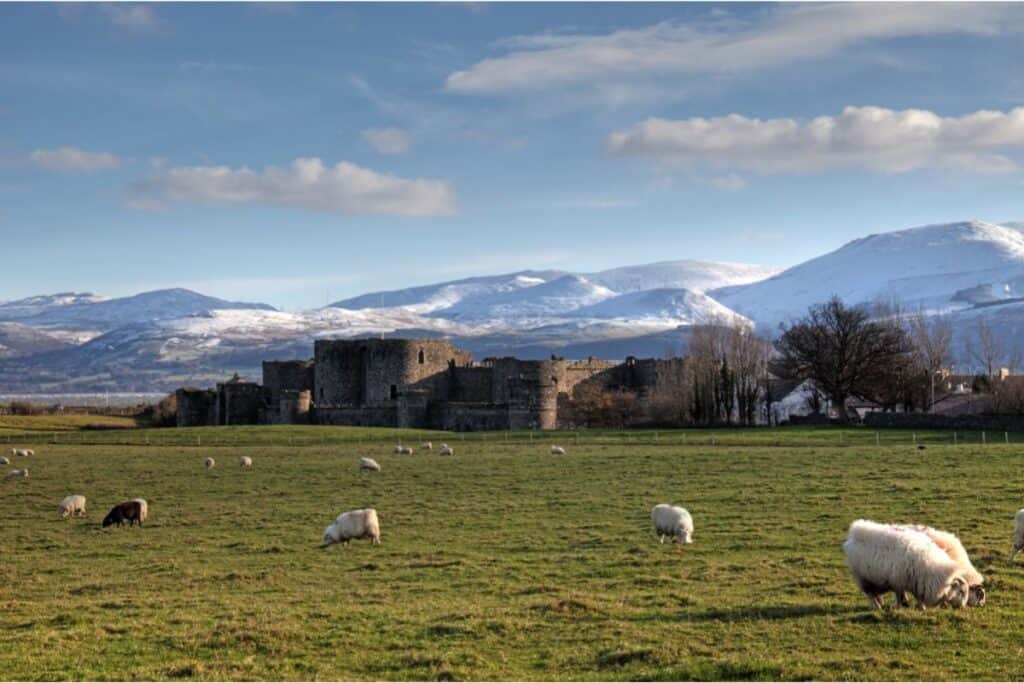
#5: Beaumaris Castle is a Certified UNESCO World Heritage Site
Beaumaris Castle is not only considered one of the finest examples of medieval military architecture but it’s also been recognised as a UNESCO World Heritage Site. The castle was added along with the other castles in Edward I’s Iron Ring, which includes Harlech, Caernarfon, and Conwy castles.
#6: Six of the Towers Were Never Built to their Planned Height
One of the slightly unfortunate consequences of Edward I running out of time and money to devote to Beaumaris Castle is that six of the towers were never completed to their intended height. The castle still has an impressive 12 towers in total, but if Edward’s plans had come to fruition, there would have been six imposing towers standing at more than 100 feet each.
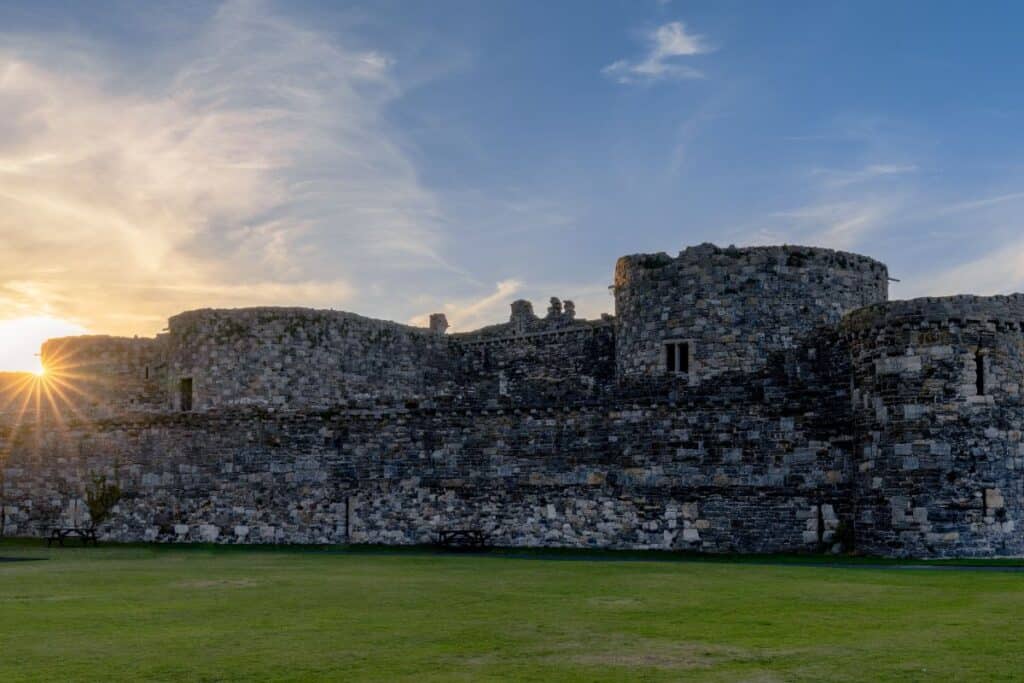
#7: Beaumaris Castle Had a Dizzying Number of Archer Positions
Despite perhaps not being quite as tall as Edward I originally intended, Beaumaris Castle was still pretty impregnable. In total, there were 300 firing positions for archers, including 164 arrow loops (narrow slits in the walls for archers to shoot through) contained within the outer walls.
There were also firing positions for archers on top of the taller inner walls, so if attackers ever managed to breach the outer walls, they would face fire from both sides!
#8: It Was the Last and Most Ambitious of the Castles Built By Edward I
After conquering Wales, Edward I set about building several castles. Known as his Iron Ring of defences, structures were completed at Harlech, Conwy, and Caernarfon. All three castles were built in a similar style to Beaumaris, with Caernarfon being the only one larger in scale.
However, while the other castles served essential strategic and administrative functions, many historians have described this castle as a vanity project since its purpose was more aesthetic and symbolic than practical.
Beaumaris was never really a focal point of Welsh rebellion, which was one reason the castle was allowed to fall into a state of disrepair before construction was eventually abandoned.

#9: Despite Being Built to Shore Up Defences in Wales, It Was the War in Scotland that Prevented the Castle from Being Finished
One of the ironies of the Beaumaris Castle, a structure built to withstand Welsh rebellions and oversee English rule in Wales, is that it was actually the Scots who prevented the castle from being completed.
With constant battles and military campaigns taking place in both Wales and, latterly, Scotland, Edward I was stretched thin and had to divert resources away from the construction of Beaumaris Castle.
#10: It Was Designed By Master James of St. Georges
Beaumaris castle was designed by Master James of St. Georges, who, if you didn’t know, was also responsible for the design and project management of Harlech, Conwy, and Caernarfon Castle. His concentric castle design at Beaumaris is considered his finest work, despite never being completed to its full potential.
Interestingly, Master James of St. Georges used a different approach when designing Beaumaris to the other castles in Edward I’s Iron Ring. Rather than building on high ground or choosing a site with other natural defences, he opted for a marshy site near the Menai Strait. This made construction much more difficult, but the finished castle would have been potentially even more challenging to attack.
His death in 1308 is part of the reason why the castle was never completed, although the spiralling costs and conflicts in Scotland (and latterly France) also played their part.
#11: An 18-Foot Moat Surrounds the Castle
Another differentiating factor Beaumaris has compared to the other castles in Edward I’s Iron Ring is that it has an 18-foot moat surrounding it, making it very difficult for attackers on foot to get close to the castle walls.
It was accessible from the Menai Strait, allowing ships to sail directly into the castle grounds, which would have been useful for resupplying the garrison in times of siege. The moat is still there today, and you walk over a bridge at what would have been the castle’s main gatehouse to enter the site.
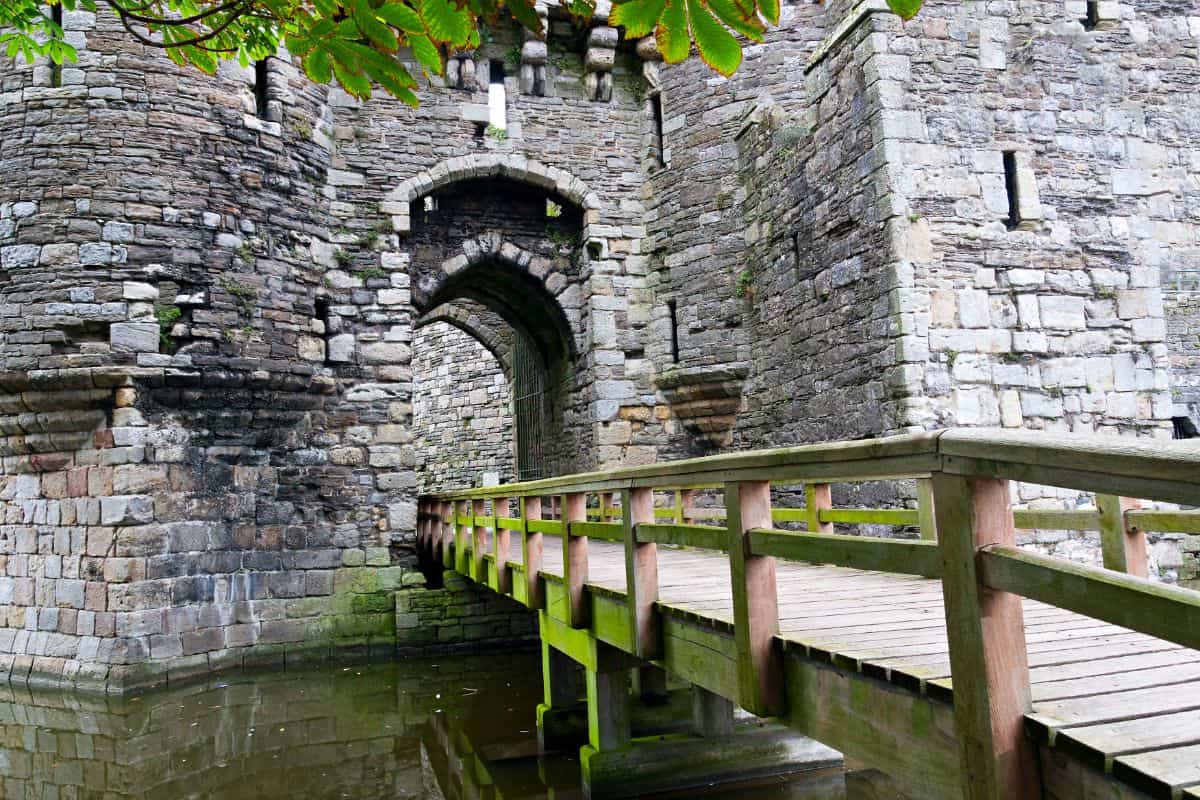
#12: Up to 3,500 Men Worked on the Castle Simultaneously
While the costs were one thing, the sheer size and scale of the building project is something else to behold. At one point during early construction, a staggering 3,500 workers were on-site simultaneously!
This was made possible by the large dockyard that Edward I had built to ferry materials across the Menai Strait from mainland Wales. The workforce comprised 400 masons, 2,000 unskilled labourers, 30 smiths, 60 carpenters, 200 quarrymen, and a garrison of knights and soldiers to protect the castle from attack.
That’s without even mentioning the number of carts, ships, wagons, and horses used to transport materials to the site!
#13: Beaumaris Castle is Owned and Operated by Cadw
Unlike other nearby historic sites owned by the National Trust, such as Plas Newydd and Penrhyn Castle, Beaumaris Castle is owned and operated by Cadw, the Welsh government’s historic environment service. They are responsible for the upkeep and maintenance of the castle, as well as opening it to visitors.
Today, over 100,000 people flock to the site every year to take a step back in history and explore this incredible castle.
#14: You Can Bring Your Dog to Visit Beaumaris Castle
If you’re looking for a historic site that’s also dog-friendly, then Beaumaris Castle is the perfect place for you! Unlike some of the Iron Ring castles under the care of Cadw, such as Caernarfon and Conwy, you are more than welcome to bring your furry friend along for a walk around the grounds.
So, whether you’re interested in castles, military history, or just want to explore somewhere new during your visit to Anglesey, Beaumaris Castle is definitely worth a visit!
If you’re planning a visit, you can find all the information you need, including ticket prices, opening hours, and directions, on the Cadw website.

